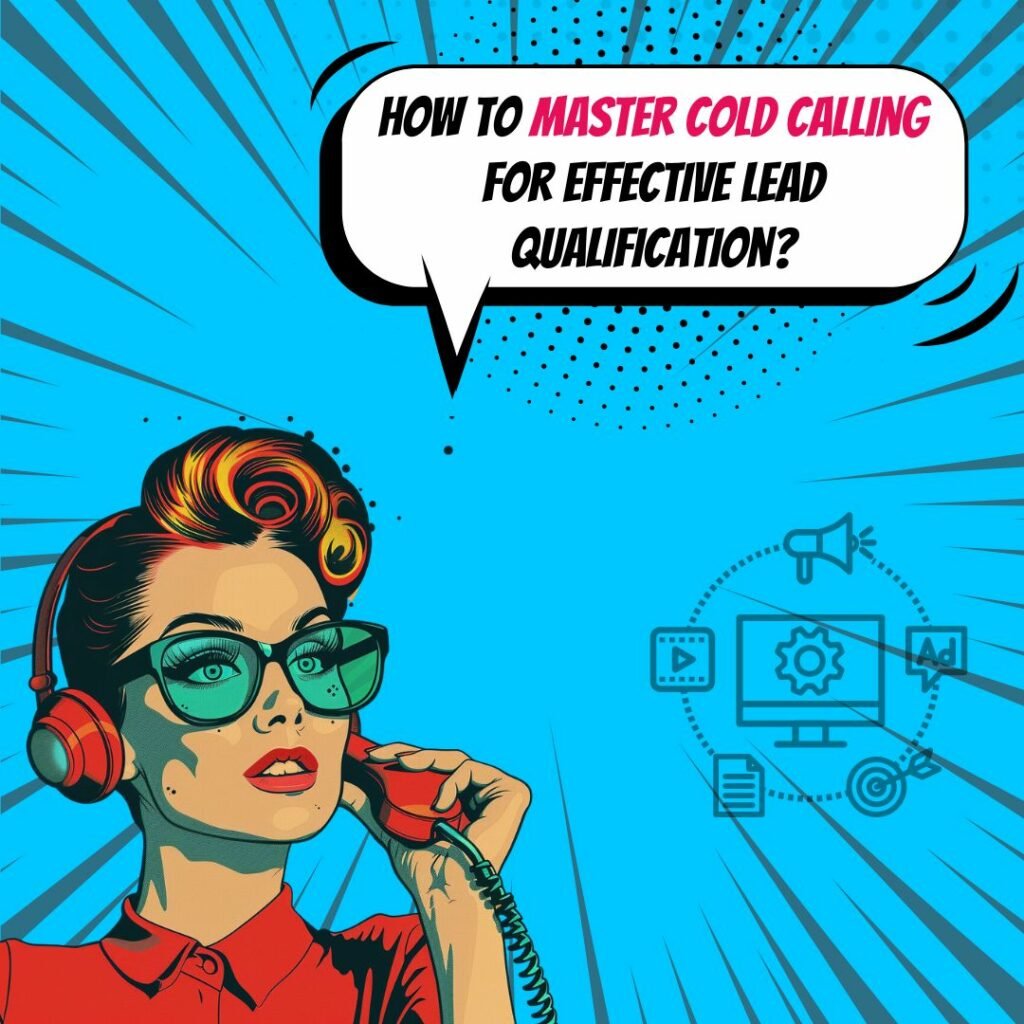Key Takeaways
✅ Research and Preparation Are Crucial: Before you even think about picking up the phone, take the time to learn who you're calling. A survey by LinkedIn showed that 69% of buyers accepted a call from new salespeople who did their homework on understanding the buyer's business. This level of preparation translates into personalized conversations that resonate with prospects.
✅ Empathy, Rapolít-Building, and Active Listening Are Essential: Cold calling isn't a sprint to the finish line; it's more like nurturing a plant. You must invest time in understanding your prospects. A study by Gong.io suggests that successful cold calls have a 68:32 talk-to-listen ratio, emphasizing the importance of listening to build that trust which leads to sales.
✅ Crafting the Right Offer and Follow-Up Strategy Is Vital: The right offer can be the difference between a quick dismissal and a new client. According to HubSpot, follow-up emails experience a significant 47% higher open rates than the first email, highlighting the necessity of a strong follow-up strategy to keep potential leads engaged and interested.

Introduction
Have you ever wondered why some salespeople seem to have a magic touch when it comes to cold calling and prospecting? It's not magic; it's mastery—and it can be the key to transforming your sales performance. Mastering the art of cold calling and the intricacies of prospecting are essential in today's competitive business landscape, where every lead counts and each call could be a game-changer.
Drawing upon the latest industry insights, this article unveils not just strategies but also the attitudes and tools that top performers are using to qualify leads better, close more deals, and achieve remarkable sales numbers. Are you interested in understanding the modern trends reshaping cold calling techniques? Do you want solutions that can maximize your revenue and provide a significant return on your time investment?
Stick around, as we're about to unlock actionable recommendations and groundbreaking information that could redefine the success of your sales efforts. Let's dive into the strategies that have turned average Joe's into celebrated sales gurus.
Top Statistics
| Statistic | Insight |
|---|---|
| 57% of C-level buyers prefer to be contacted by phone. | This highlights the importance of telephone communication, especially when trying to engage upper management in sales discussions. |
| 69% of buyers accepted a cold call in the last year. | This statistic suggests that despite popular belief, cold calling can still be an effective way to connect with new leads. |
| It takes an average of 8 cold call attempts to reach a prospect. | Persistence is key in cold calling; sales reps should not be discouraged by initial rejections. |
| Only 1-3% of cold calls ultimately lead to appointments. | Qualifying leads and understanding this conversion rate is crucial for setting realistic sales expectations. |
| 41.2% of sales professionals consider the phone their most effective tool for prospecting. | Even in a digital age, traditional telephone prospecting remains a favored method among salespeople for generating leads. |
Mastering the Art and Science of Cold Calling
Cold calling can seem like trying to navigate a minefield blindfolded, but it doesn’t have to be a game of chance. At its core, cold calling is about connecting with another human being, using a mix of empathy and a well-researched understanding of the person on the other end of the line. Arming oneself with data-driven insights is critical to identifying viable leads that could blossom into nutrient-rich opportunities. The numbers don’t lie – studies have shown that it can take an average of eight cold call attempts to reach a prospect, which highlights the importance of persistence and a strategic approach. Additionally, the right mindset and attitude can significantly impact the outcome of your calls. Understanding the psychological aspects of sales can also give you an edge.
Preparing for Successful Cold Calls
Imagine picking up the phone already knowing the person you’re about to talk to as if they were an old friend. This can be achieved through thorough research on the prospect and their company, which should be the bedrock of any call. Knowing their business pain points is just as crucial as asking how their day is going. It’s been observed that sales reps who can adeptly uncover and understand customer needs are able to build a strong sales pipeline, converting up to 70% more leads. Using this knowledge to create a comfortable calling environment can be the difference between sounding confident or unsure, which in turn greatly affects your success on the call. Preparing a tailored opening line can set a positive tone for the conversation. Equipping yourself with relevant case studies or success stories can also provide persuasive evidence during the call.
Crafting Compelling Conversations
Value is the coin of the realm in sales. If you can clearly communicate how your service or product can alleviate the prospect's pain points, you're already halfway through the door. It's not just about listing features; it's about painting a picture where the benefits of your offer improve the prospect's business or life. Facing objections is inevitable, but those who are well-prepared can use them as stepping stones rather than stumbling blocks, and a compelling voicemail can often be the trailhead to a successful sales journey. Personalizing your pitch to address the prospect's specific needs can enhance engagement. Listening actively and responding thoughtfully can build rapport and trust. Asking insightful questions can uncover deeper needs and drive the conversation forward.
Effective Cold Calling Techniques
Being human is your secret sauce in cold calling. Dropping your name early in the conversation and asking questions that show genuine interest can help to engage the prospect and set the stage for more fruitful dialogue. Striking a balance between leveraging a script and allowing natural conversation flow is key. It’s important to focus on laying bricks for a future relationship by aiming for an appointment rather than going for a hard sale right away. And as any seasoned veteran knows, embracing rejection as a learning experience is essential for growth. Developing a strong opening statement can capture attention immediately. Using positive language and a friendly tone can create a welcoming atmosphere. Following up consistently can keep the conversation alive and show your dedication.
Leveraging Prospecting Tools and Strategies
Why cast a wide net when you can fish with a spear? Modern prospecting tools like LinkedIn Sales Navigator and CRM software can pinpoint the right leads with surgical precision, often yielding a goldmine of insights. By analyzing recorded calls, a salesperson can refine their pitch, iron out any glitches, and ultimately, connect better. In fact, 42% of sales reps feel they do not have enough information before making a call, which these tools can help mitigate. A robust follow-up strategy using emails and texts is what keeps you in a prospect's orbit until you can securely dock with their interests. Integrating AI and machine learning can further enhance prospecting accuracy. Utilizing social media insights can provide additional context for your calls. Regularly updating and maintaining your contact database ensures you have the latest information at your fingertips.
Continuous Improvement and Adaptation in Cold Calling
The road to mastering cold calling is paved with personal anecdotes, unique experiences, and a willingness to continuously refine your approach. Adaptability is your compass here – those who are proactive in applying new insights and testing their effectiveness tend to find the most success. Reflect on this – a staggering 92% of all customer interactions happen on the phone, emphasizing how crucial honing this skill is. It underscores that mastery in cold calling isn't an endpoint but a journey of building lasting relationships, solving real problems, and making an intentional impact. Regularly reviewing your calls can provide valuable feedback for improvement. Staying updated with industry trends can keep your approach relevant and effective. Investing in continuous training and development can help you stay ahead in the competitive sales landscape.
AI Marketing Engineers Recommendation
Recommendation 1: Implement a Personalized Approach with a Touch of Data Analysis: Crafting personal connections over the phone is not outdated; in fact, it's more crucial than ever. But how do you make it feel personal when you are cold calling? Well, it starts with data. Before you pick up the phone, take the time to understand who you're calling. With 57% of customers saying that personalization influences their shopping behavior (Salesforce), tailoring your speech to the recipient's industry, role, or recent company news can make or break the deal. Collect data on their pain points, current tools they use, or achievements and incorporate this into your call to show genuine interest and create rapport. This turns a cold call into a warm conversation.
Recommendation 2: Embrace Social Selling to Warm Up Your Leads: Cold calling isn't just about the call anymore. In today's digital age, 78% of salespeople engaged in social selling are outselling their peers who aren’t (LinkedIn). Social selling is about using social media to find and engage with new prospects. Engaging with potential leads on platforms like LinkedIn before the call can increase familiarity and reduce the surprise factor of a cold call. Share content, comment on posts, and initiate soft conversations. When it's time to pick up the phone, your name might just ring a bell, making the process feel less like a cold call and more like a warm lead.
Recommendation 3: Leverage CRM and Automation Tools to Streamline Prospecting: There's a wealth of technology at your fingertips, designed to make life easier and increase sales effectiveness. With a CRM (Customer Relationship Management) system, you can keep track of your prospects, schedule calls, log call details, and follow-up tasks. Furthermore, embracing automation tools for prospecting can save precious time. These tools can help you identify when your prospects are most likely to be receptive to a call, based on their online behavior or engagement with previous communication. HubSpot research shows that implementing CRM systems can boost sales by up to 29%. Use these systems not just as a database, but as a strategic tool for timing your calls and follow-ups.
Relevant Links
- Persistent Prospecting: Mastering the Art of Cold Calling
- Unlocking Sales: Prospecting Tools and Techniques for Growth
- Build Better Business Relationships with Strategic Cold Calling
- Continuous Learning: The Key to Cold Calling Mastery
Conclusion
In a world constantly shifting towards digital communication, some might wonder if the ancient art of cold calling is dead. Far from it. Mastering cold calling and prospecting techniques remains a golden thread in the fabric of sales success. It's undeniable: Crafted correctly, a cold call can transform a stranger into a valuable customer. It's not just about dialing number after number, it's about strategizing and humanizing, melding empathy with a thoughtful approach to ensure you connect with the person on the other side.
From the foundations of researching prospects and tailoring your pitch, to the finesse of engaging potential leads and turning objections into opportunities, quality cold calling is a nuanced dance. Have we considered how a well-crafted offer or a timely follow-up can keep us on the radar of our prospects?
As we wrap up, let's ponder on this: Are we ready to embrace cold calling as not merely a tactic but as a gateway to relationships, an opportunity to solve real problems, and a path to leaving a lasting impact? With continuous learning and adaptation, every call we make is more than just a prospecting attempt—it's a chance to refine our art, to build our science, and to advance our journey in the sales realm. So, what's the next step? Get out there, dial that number, and start a conversation that could lead to your next big sale.
FAQs
Question 1: What is cold calling?
Answer: Cold calling is reaching out to potential customers who haven't shown interest in your product or service before. It's usually done through phone calls or emails that the person wasn't expecting, and it's all about creating new business opportunities.
Question 2: Why is cold calling important?
Answer: Cold calling is important because it's a way to find new customers, increase sales, and build valuable relationships. It's a key part of growing a business.
Question 3: What are the key elements of effective cold calling?
Answer: To make cold calling work, you need a mix of personal skills like empathy, building a connection with people, and listening closely, and technical skills like using data and the right tools to make informed decisions and scripts.
Question 4: How do you research prospects before calling?
Answer: Researching is all about getting to know the company or person you're going to call. You'll want to look at things like their business, what they've done in the past, and who they are. You can use LinkedIn, check out their website, or take a look at their social media to get this information.
Question 5: What is the role of empathy, rapport-building, and active listening in cold calling?
Answer: Empathy, building a rapport, and listening are super important because they help you connect with the person you're calling. They make the person feel understood and help build trust, which can then make it easier to find out what they need and offer them something that truly helps.
Question 6: How do you handle rejection in cold calling?
Answer: Rejection is just a part of cold calling. The trick is to not take it personally and just move on to the next call. Creating a character or persona for yourself while making calls can help make the rejection feel less personal.
Question 7: What are some tips for creating a comfortable environment for cold calling?
Answer: To stay relaxed while making your calls, set up a space where you feel at ease. You can use soft lighting, add some background noise if it helps, or even a bit of aromatherapy with essential oils.
Question 8: How do you craft the right offer for a prospect?
Answer: To create an offer that a potential customer might be interested in, you really need to understand what they need first. Then you can show them how what you're offering can make their life or business better.
Question 9: What are some strategies for getting past voicemails?
Answer: When you reach a voicemail, leave a message that makes the person want to call you back. Practice your message and even record yourself to see how you can improve.
Question 10: How do you follow up with prospects after a cold call?
Answer: After a call, follow up with short emails or texts that talk about the benefits and have a clear next step for them to take.
Academic References
- Gong.io. (2018). Gong's Analysis of Cold Calling Techniques. This comprehensive analysis by Gong.io covers numerous facets of cold calling, focusing on opening lines, the effectiveness of specific questions, and how interaction rates correlate with successful calls. For example, using a personal touch like asking "How are you?" can significantly enhance the chance of securing a meeting.
- Yesware, Inc. (2020). Mastering the Art of Cold Calling: Yesware's Ultimate Guide. Yesware's guide serves as a pivotal resource, outlining the necessity of preliminary research, crafting a targeted approach to prospect lists, and the art of multi-touch follow-ups. It also underscores the crucial role of a caller's tone, with a striking 93% of call success influenced by this factor.
- Salesmate. (2019). Top B2B Cold Calling Tips for Sales Success. Salesmate's insights delve into the strategic approach to building relationships through cold calling by posing relevant questions and adapting to the use of local numbers to forge trust. The guide underlines the essence of identifying and thoroughly understanding an ideal sales prospect, alongside a deep dive into their business landscape.
- Freshworks Inc. (2021). Winning Strategies for Cold Calling: Freshworks’ Techniques. In this technique exploration, Freshworks Inc. discusses how employing data analytics for targeted outreach, along with personalization and AI tools for scoring leads, can optimize cold calling efficacy. Moreover, the text touches on the fundamental need for ethical and respectful communication, as well as the impact of consistent follow-ups.
- Saleshood. (2019). Cold Call Coaching Tips to Elevate Your Sales Team's Performance. Saleshood offers guidance for cold callers to make a lasting first impression, set well-defined call objectives, and effectively leverage social proof in their conversations. Additionally, it provides data suggesting that the best times for productive calls are on Tuesdays and Thursdays, particularly between 3:00 PM to 5:00 PM.












